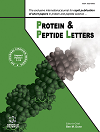
Full text loading...
Bacteriophages, or phages, have emerged as powerful platforms in synthetic biology, offering innovative solutions for therapeutic and environmental challenges through advanced genome redesign strategies. This review explores a wide range of phage engineering techniques, including CRISPR (clustered regularly-interspaced short palindromic repeats)-Cas systems, phage display, random and site-directed mutagenesis, retrons, and rebooting approaches, highlighting their potential to create phages with tailored functionalities. CRISPR-Cas systems enable precise genome editing, allowing the development of phages with expanded host ranges, biofilm degradation capabilities, and targeted antimicrobial activity. Phage display facilitates the presentation of peptides on phage surfaces, enabling applications in targeted drug delivery, tumor imaging, and bioremediation. Beyond these, techniques like retron-mediated recombination and homologous recombination offer additional avenues for precise phage genome modification. In the therapeutic realm, engineered phages show promise in combating drug-resistant infections, modulating the microbiome, and delivering targeted therapies for cancer and other diseases. Environmentally, phage-based strategies, such as the use of phage-displayed metal-binding peptides, provide innovative solutions for bioremediation and reducing exposure to toxic heavy metals. This review also addresses challenges, such as phage resistance, immune responses, and the limitations of current engineering methods, while exploring future directions, including the development of improved CRISPR systems, phage-based biosensors, and high-throughput screening platforms. By integrating cutting-edge genome redesign strategies with diverse applications, this review underscores the transformative potential of engineered bacteriophages in addressing global healthcare and environmental sustainability challenges.

Article metrics loading...

Full text loading...
References


Data & Media loading...

